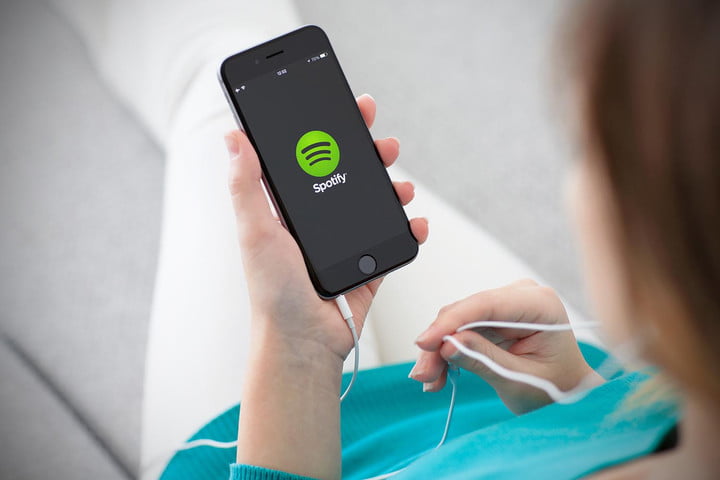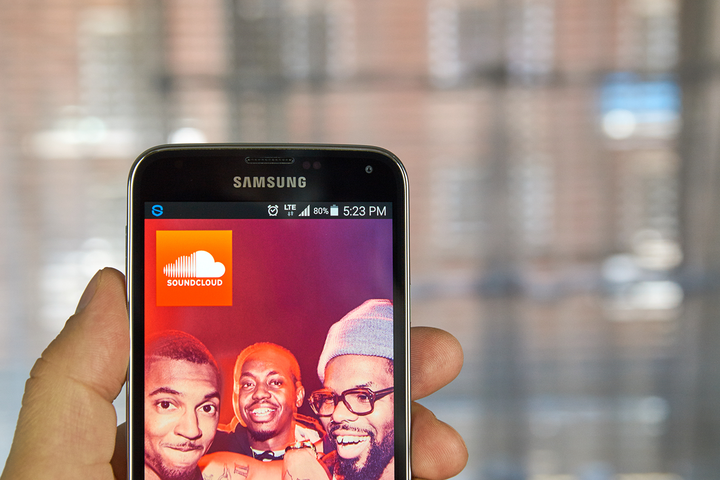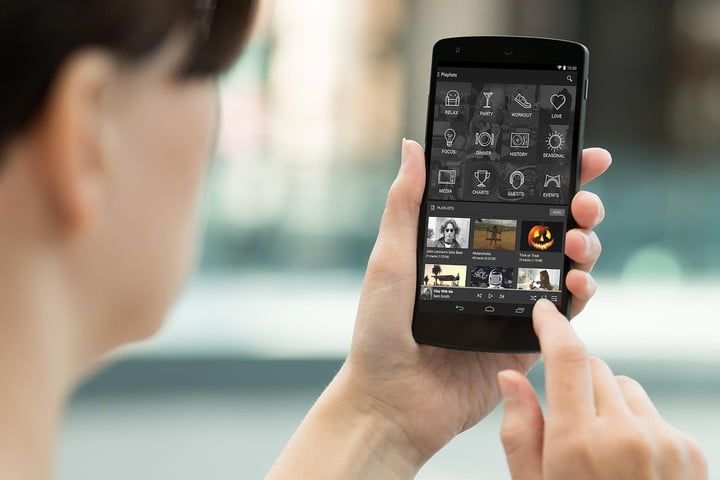The Best Music Streaming Services
As more and more listeners shy away from physical recordings in favor of online music libraries, different music streaming services keep popping up, each offering a varied amount of songs, features, and quirks. But only a choice few have what it takes to join our list of the best.
We’ve spent some time with all the most popular services online, culled the options to this list of the top five streaming services for all different types of listeners. Whether you’re into music discovery, streaming radio, or the highest audio resolution you can find, these are the best on-demand streaming services available today.
At a glance
Spotify
The best

Why you should subscribe: It’s the best music discovery platform you’ll find, it has a huge catalog, and it can be tested for free indefinitely.
Who it’s for: Streaming newcomers, new-musical explorers, and just about everyone else.
How much it will cost: Free with ads, $10 per month ad-free for single users, $15 ad-free for families (up to six users), and $5 ad-free for students
Why we picked Spotify:
With millions more paying subscribers than the closest competition, Spotify is — by a wide margin — the most popular on-demand streaming service on the market today. That’s true for a number of reasons, including the service’s extremely user-friendly interface on desktop, iOS, and Android, numerous third-party integrations — such as Amazon’s Alexa and Google Cast — and a diverse array of well-curated playlists and music-discovery tools.
One of the earliest pioneers of on-demand streaming, the Swedish streamer has long enticed newcomers with a free, ad-based desktop platform, and as streaming has begun to take hold of the industry, many of those users have eventually become paid subscribers. Apart from kicking the annoying ads, paying up allows you some real advantages, including being able to choose songs on demand via mobile devices — an important feature for most users that the ad-based service doesn’t offer.
In a streaming market that increasingly turns to exclusive releases from big-name artists to capture more users, Spotify employs its status as the industry leader to force the hands of artists and labels alike to release their music on the service. For instance, Drake is a paid ambassador for Apple Music, but his mega-hit album Views didn’t stay an Apple Music exclusive for long — the album landed on Spotify within a few weeks of its debut. Radiohead — a band with no shortage of terse words about Spotify’s royalty payments — also eventually released their entire catalog on the service. Even Taylor Swift eventually gave up her stand against Spotify, after years of Apple Music exclusivity.
While there are a few Spotify holdouts (including Garth Brooks), Spotify’s catalog of well over 30 million songs assures that if you can’t find it on Spotify, it will be tough to find it anywhere else.
Those looking to find their next favorite band will also love Spotify for its updated playlists like Monday’s Discover Weekly and New Music Friday, all of which follow your listening habits to recommend surprisingly fitting new artists to match up with your listening tastes.
Looking to listen to that cool band your friend is into? Spotify’s Facebook integration allows you to follow friends and see what they have been listening to, as well as check out any playlists they’ve decided to make public.
While competitors do offer some exclusive features, Spotify is the most well-rounded, intuitive, and hassle-free option available. Unless you have a very specific sonic need the service can’t satisfy (which we’ll outline below), we suggest streaming newbies get on the Spotify train.
While you’re at it, be sure to check out our massive assortment of Spotify playlists for all occasions.
Apple Music
The best for Apple fans

Why you should subscribe: You’re an Apple user looking for the best service to integrate with all your stuff.
Who it’s for: Lovers of iTunes, hand-curated live radio, and all things Apple.
How much it will cost: $10 per month for a single user, $15 for a family plan (up to six users), $5 per month for students, $99 per year for those who have already subscribed.
Why we picked Apple Music:
While we generally prefer Spotify to Apple Music when it comes to features and usability, there are definitely some compelling reasons to check out the second-most popular on-demand streaming service.
First and foremost is Apple Music’s iOS and MacOS integration. Those with iPhones, iPads, and MacBooks will love the fact that they can ask Siri to search for specific artists, songs, or playlists, and virtually everything music related on an Apple device is tied into the service. In addition, longtime iTunes users will be pleased to find many of their songs are immediately available in their Apple Music streaming library upon signing up, along with the ability to store up to 100,000 songs for later use (Spotify downloads cap at 9,999).
The company also offers multiroom integration via Airplay 2, which came with the release of iOS 11, alongside its brand new HomePod speaker, allowing Apple fans a similar listening experience to that offered by Amazon’s Echo and Google’s Cast products.
Apple Music’s Beats 1 Radio is another huge bonus. The 24-hour live radio service features curation by famed DJs like Zane Lowe and numerous celebrities like Ryan Adams, Pharrell Williams, Mike D, and others. Beats 1 also frequently premieres some of the biggest songs in pop music.
Speaking of premieres, Apple works hard to be the first to showcase songs from some of the world’s biggest pop artists, including Drake, Taylor Swift, and Frank Ocean.
Those looking to save some cash will also be excited to note that the company allows current subscribers to pay $99 for an entire year on the service, allowing you to sign up and then save $20 per year on your favorite tunes.
If you’re a fan of the biggest names in pop, love radio-style listening, and own an iPhone or other Apple device, Apple Music could be your service of choice.
Pandora
The best for passive listening

Why you should subscribe: Pandora’s thumbs-up/thumbs-down algorithm still rules internet radio.
Who it’s for: Those who like to press play and walk away.
How much it will cost: Free ad-based radio, $5 per month for ad-free radio, $10 per month for ad-free on-demand music streaming
Why we picked Pandora:
Though Pandora recently unveiled its much-anticipated on-demand streaming tier that features 40 million tracks, the best reason to subscribe to the service is to bask in the glory of its Music Genome Project. Since the early 2000s, the company has been attempting to “capture the essence of music on every level,” categorizing tunes based on hundreds of unique characteristics.
With such an abundance of data about each song, Pandora is able to offer the best curated, radio-style streaming online, all based on simple thumbs up or thumbs down ratings. Users can pick a favorite artist or track and press play, letting the magic algorithms behind the scenes at Pandora go to work. No matter who you’re into, Pandora will create a constant list of complimentary songs to enjoy.
While the on-demand service is a nice addition, Pandora is best for people who like to simply sit back and let the tunes roll on.
SoundCloud
The best for indie music discovery

Why you should subscribe: With more than 100 million user-created tracks, SoundCloud has one of the most diverse indie libraries online.
Who it’s for: Indie music fans who prefer to take a hands-on approach to music discovery.
How much it will cost: Free with ads for access to 120 million user-added tracks, $5 per month for ad-free access to user-added tracks, $10 for user-added tracks plus 30 million major label tracks.
Why we picked SoundCloud:
SoundCloud’s biggest asset is its extremely creative, massive user base. With nearly 200 million active users per month and a huge number of small-name artists constantly uploading their latest and greatest songs to the service, those who have the patience to dig through SoundCloud’s immense tracklist are sure to find an unknown artist they love.
However, because it has so many songs and a layout designed around single tracks rather than playlists, SoundCloud really is for crate-digger types — those who’d prefer to sift through tons of tunes to find their next favorite band, rather than relying on a computer algorithm to predict what they may or may not like.
While this is great for a very specific kind of user, it may not be right for the average listener. In fact, SoundCloud is having a lot of trouble getting people to pay up for its service, routinely needing cash infusions from investors to remain solvent. Still, if you find yourself on SoundCloud searching for new favorites for hours a week (which we do to find the best new music for you), you may want to think about upgrading to an ad-free experience.
Tidal
The best fidelity

Why you should subscribe: You demand the highest audio resolution, and you’re willing to pay for it.
Who it’s for: Stubborn audiophiles, serious Jay Z fans.
How much it will cost: $10 per month for compressed 320kbps audio, $20 for lossless 24-bit 1411kbps audio.
Why we picked Tidal:
It’s no secret that we aren’t big fans of Tidal, the music service purchased by hip-hop mogul Jay Z in 2015 and recently purchased in part by Sprint. With fewer tracks, poor music discovery features, and a sometimes buggy interface — not to mention a history of botched album releases — there are plenty of reasons to avoid the service entirely in search of calmer streaming waters.
However, for those who absolutely refuse to compromise when it comes to audio quality, Tidal’s $20-per-month Hi-Fi service, which offers 24-bit audio resolution, is the best game in town. This makes the service something of a dichotomy, as Tidal seems to be aimed towards the mass market, but it’s really best for those with high-quality gear who care more about the fidelity of their audio source than interface usability or library size.
This advantage is likely to change in the future, as companies like Spotify are anticipated to launch their own high-fidelity tiers down the road. But for now, those with extremely expensive stereo systems who actually care about rising above the typical 320Kbps resolution quality of Spotify, Apple Music, and virtually every other major streaming service on the market (including Tidal’s own lower tier), Tidal HiFi is the best way to fly.




